The Goddess Brigid is a mysterious Celtic Goddess in Celtic and Irish mythology. Even today, her wide spread influence in society can still be felt.
Brigid’s power may be felt in many areas, including healing, fire, and holy wells.
Discover all about the Celtic Goddess Brigid’s character and her history in this post.
We will also explore the symbolism surrounding the Brigid Goddess, as well as the transformation from powerful Celtic goddess to respected Christian saint.
This post may contain affiliate links. If you click on one of them, we might receive a small commission (at no extra cost to you). Thanks for your support!
Table of Contents
- 1 Brigid the Goddess
- 2 Brigid Celtic Goddess
- 3 Brigid Irish Goddess and Animals
- 4 Brigid Triple Goddess
- 5 Brigid the Fire Goddess
- 6 Brigid – From Celtic Goddess to Christian Saint
- 7 Goddess Brigid Symbols and Their Meanings
- 8 Brigid Irish Goddess as a Modern Goddess
- 9 Brigid the Goddess of Fire, Poetry and Healing – FAQs
Brigid the Goddess
Brigid of Ireland’s origins lie deep in Celtic mythology.
Much of what we know about her comes from the tales in the collection of old Irish stories known as Lebor Gabála Érenn (“The Book of the Taking of Ireland”).
Interestingly, Brigid is not only known as a deity in Ireland, but also in other Celtic cultures.

Goddess Brigid’s Origins
Brigid the Goddess is part of the original pantheon of Celtic pantheon. Her father is the chief of the Celtic Gods, The Dagda.
As a Goddess, her influence extends over many areas in life, which the Celts highly valued.
The name Brigid can be translated as “the Exalted One”. This reflects her status as a powerful and respected deity in the Celtic world.
Sometimes the name Brigid is spelled differently. It is also written as Bridget, Brigit, Bríde, Bríd. (The root meaning of Brigid and the other spelling variations are the same.)
Like many of the Celtic Gods and Goddesses, she is descended from the superhuman tribe known as the Tuatha Dé Dannan.
Brigid, daughter of the Dagda, married Bres, another member of the Tuatha Dé Dannan.
Together they had three sons, each of whom inherited certain traits and powers from their mother.
Ruadán was one of her sons. His death spurred intense sadness in Brigid. In the process of mourning her son, she wailed and sang.
This is said to have been the start of the keening, which is the act of hgh pitched wailing in grief for a loved one.
Brigid Celtic Goddess
Brigid is known for her many divine abilities including wisdom, knowledge, creativity and transformation.
She is commonly referred to as a Fire Goddess. Some scholars claim that she may also have been one of the Dawn Goddesses.
Blacksmithing is also something that Brigid is strongly connected with. This is why she is referred to as the Goddess of Smithing or Brigid the Smith.
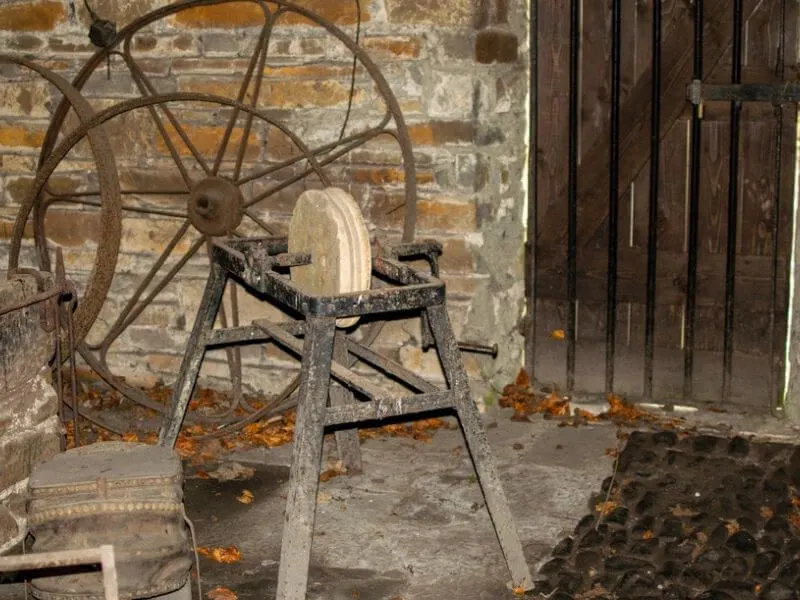
Through her connection with fire and creativity, she possesses the power to form and sculpt new creations.
Through poetry, Brigid showed her imaginative abilities with language earning herself the title of The Goddess of Poetry.
Like the many Celtic symbols inspired by nature, the art of poetry was highly regarded by the Celts.
Brigid Irish Goddess and Animals
Two large oxen were believed to have belonged to Brigid. These were known as the two Oxen of Dil, named Fe and Men.
These animals contributed to distinctive place names in Ireland.
According to legend, the river plains of the River Barrow, Mag Fea, and the River Suir, Mag Femin can be traced back to these animals.
Other animals associated with Goddess Brigid include a boar called Torc Triath.
Dairy cows were an important asset to the Celtic people and Brigid was often seen as their guardian.
The production of milk and dairy is connected with motherhood and fertility, which is another aspect of the Goddess Brigid.
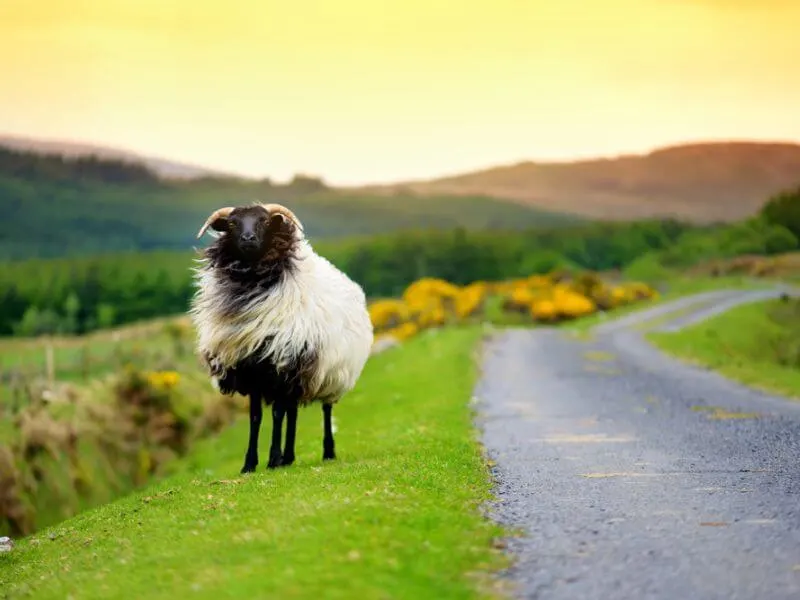
Imbolc, the Celtic Festival that ushers in the new spring season, has a strong association with milk, sheep and the Brigid the Goddess.
Brigid Triple Goddess
One of the reasons why Brigid is such a complex character is that she is typically represented as a triple goddess in Celtic mythology.
As a triple Goddess, Brigid’s Goddess powers include three separate, but related aspects that reflect her range of talents and ability.
These distinctive facets are frequently referred to as three sisters or three expressions of the same goddess.
Both Brigid and the Morrigan Goddess are thought to be triple goddesses.
Brigid the Fire Goddess
Brigid Goddess of Fire acted as the keeper and guardian of the eternal flame of life.
Fire was a very important element in Celtic beliefs as it is essential for daily life as a source of light, warmth and forging tools.
In addition it was also seen as a source of a never-ending source of life, as well as spiritual inspiration.
Fire was also believed to have a transformative power capable of cleansing and purifying the spirit.

Occasionally fire temples would have been used to honor Brigid, especially around the spring festival of Imbolc.
By being the Goddess of Fire, Brigid was seen as a knowledgeable, creative as well as inspirational force for change.
Often Brigid is depicted with light or brightness. The Brigid fire emblem is also commonly seen.
The Irish God of Fire is Aed or Aodh. Some stories suggest that Aodh is one of the siblings in the Children of Lir.
Belenus is the Celtic God of Fire whose name probably inspired the ancient festival of Beltane.
Brigid the Goddess of Healing and Health
Brigid is not only connected with the element of fire, but also water.
Holy wells and waterways are often connected with Brigid and her ability to heal.
Around the countryside of Ireland there are many wells dedicated to Brigid the healer.
The water from these wells is thought to have certain healing properties associated with them.
These miraculous cures are not only connected with physical illnesses, but emotional and spiritual pain as well.
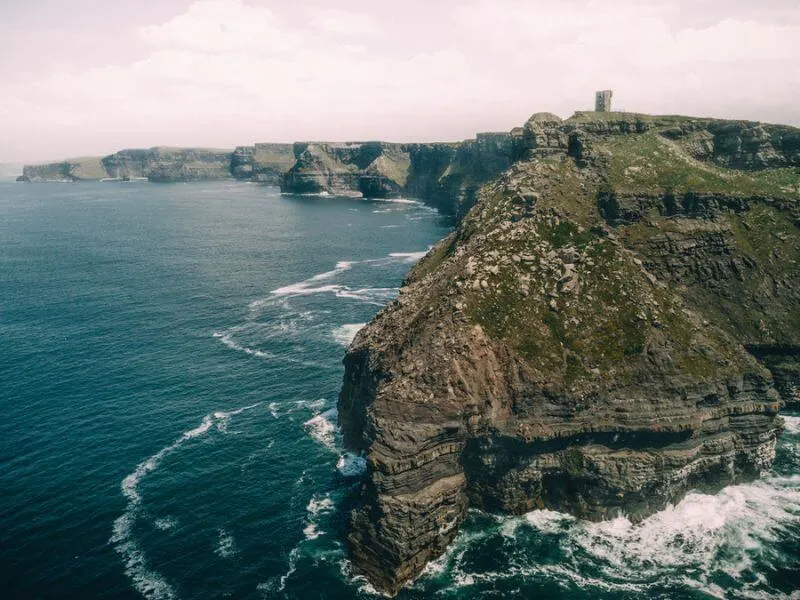
Her transformation powers are believed to help to mend broken spirits and help to build resilience during challenging times.
Brigid Goddess of Healing, embodies the divine feminine qualities of care and restoration.
Brigid the Goddess of Fertility and Motherhood
Brigid is revered as a kind, watchful mothering figure known for her unconditional love, support, protection and inspiration.
Danu is known as the Celtic Mother Goddess.
In this role, her influence includes the welfare of the mother and baby and guidance in all things related to motherhood from conception to the birth.
As a Fertility Goddess, Birgid was also thought to have an effect over the harvests and fertility of farm animals.
Dairy cows were just one of the types of livestock she had influence over.
Her blessings were thought to bring bountiful harvests and prosperity to the land and her people.
The diverse aspects of Brigid’s the Goddess’s personality and character relating to fire, healing and motherhood have helped to make her relatable to many people.
Through the versatility of her powers and abilities, she has been able to impact the lives of her followers in many ways.
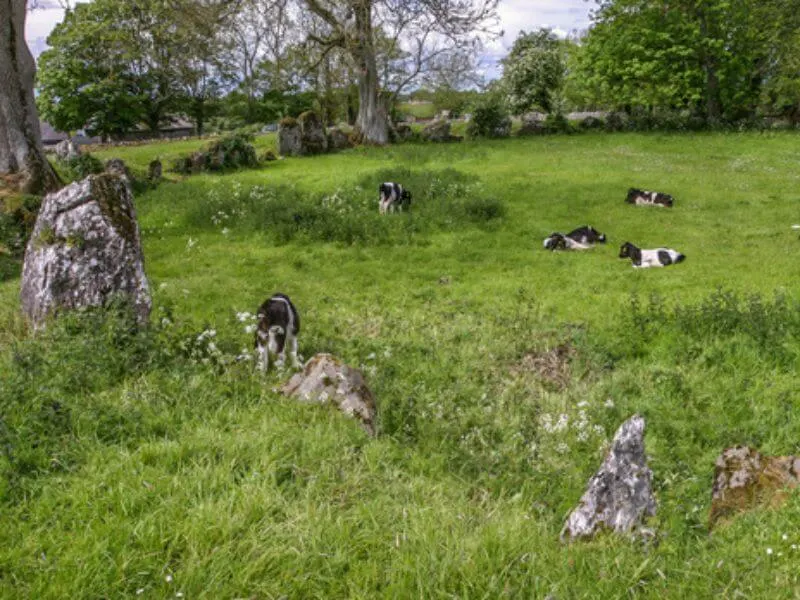
Brigid – From Celtic Goddess to Christian Saint
Brigid is a particularly special figure in Irish history who underwent a remarkable transformation.
She was initially revered as a Celtic Goddess and a central figure in Celtic mythology.
As Christianity spread through Ireland, Brigid became less and less associated with her Celtic past and instead became known as a Christian saint.
In fact, Saint Brigid (or sometimes named Saint Brighid) is one of three patron saints of Ireland. She is the only female patron Irish saint of the country.
The other two Irish saints are Saint Patrick and Saint Columba, who also dedicated their lives to religious life.
The spring festival of Imbolc on February 1 is strongly associated with the pagan Goddess Brigid.
February 1 is also now the feast day of Saint Brigid, thus continuing the link between the goddess and saint.
The Eternal Flame of Kildare
Kildare has traditionally been associated with Saint Brigid.
The saint is not only frequently referred to as St. Brigid of Ireland, but as St. Brigid of Kildare. She is thought to have established Ireland’s first nunnery in the county.
Legends tell that the nuns in this nunnery started a fire to honor the saint.
This perpetual flame was said to have been maintained only by these women for centuries. Unlike a normal flame, this one apparently produced no ash.
According to some stories, the flames were snuffed out by the soldiers of Cromwell’s army during the 16th century although the facts on this are scarce.
As recently as 1993, a sacred fire for Saint Brigid of Kildare was once again rekindled in County Kildare.
The Brigidine Sisters continue to keep the flame alive today in the Brigid Room of the Solas Bhride Centre.
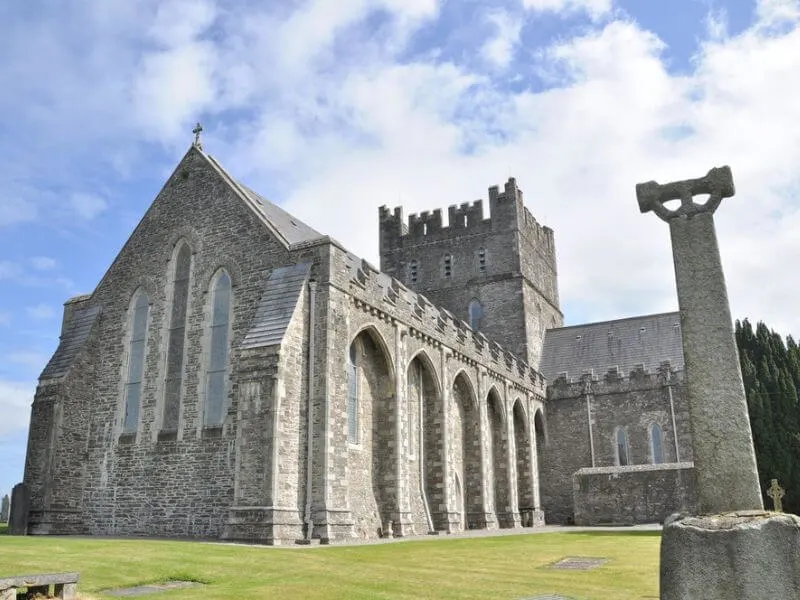
Did you know that Kildare Cathedral is called St. Brigid’s Cathedral? It was originally a Roman Catholic cathedral, but since the middle ages has been part of the Protestant Church of Ireland denomination.
Goddess Brigid Symbols and Their Meanings
The Irish Goddess Brigid is connected with several significant symbols associated with her that reflect her many aspects and talents.
As well as representing her divine powers, these symbols are reminders to her devotees of her continued presence in their lives.
The Brigid’s Cross: Safety and Protection
The Brigid’s Cross is a very unique symbol. It is traditionally made from reeds or straw that are woven together in a cruciform shape.
A square form is in the center of the Brigid cross and four arms of equal length extend out from the square.
Several different variations of the cross of Brigid exist.
Instead of a central square, some have a diamond or triangular shape, which may have its origins in Celtic shapes and symbols.
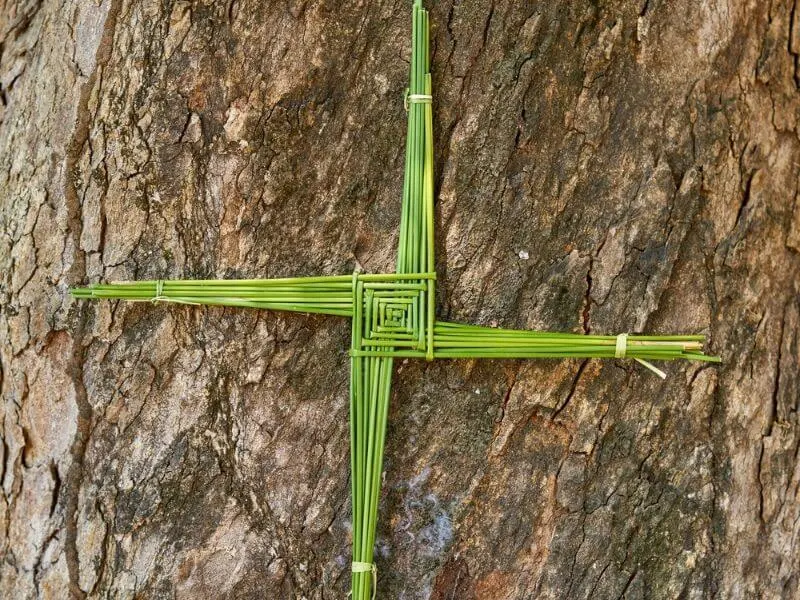
One of the traditions is making a new cross to celebrate each St. Brigid’s Day (February 1).
This symbol is traditionally hung in the home for protection, as well as good luck. It is believed to protect against fire, bad spirits and harm.
Some people believe that the four arms of the cross represent the four elements.
The way they are connected to each other in her cross represent Brigid’s affinity with nature and her ability to restore equilibrium and peace.
It is sometimes referred to as an Imbolc cross.
Related articles about the Crosses of Ireland: Stone Carved Celtic Crosses and traditional Irish High Crosses
Holy Wells with Healing Waters
Throughout Ireland there are many sacred wells connected with the Brigid name.
These symbolize the healing powers of Brigid, as well as the healing and cleansing effects of water.
The purification is not only in the physical sense, but also as a form of spiritual renewal.
People seeking healing from physical, emotional, as well spiritual problems visit these wells.
Devotees believe that the special properties can provide miraculous remedies to their ailments.
Brigid’s unique connection with this natural resource signifies her role as a proctor of the environment and this life-giving element.
The Perpetual Flame of Inspiration and Purification
The holy fire in Kildare symbolizes Brigid’s relationship with the divine element of fire.
Brigid the Goddess was intrinsically linked to flame, light and brightness as the Goddess of Fire.
As a source of light, Brigid acts as a motivator and has the power to uplift, inspire, as well as transform those who are willing for change.
In Celtic tradition, fire can be used to ward away harm, but all as a way to purify.
Brigid is believed to help cleanse and refresh the spirit through her deep ties with fire and flames.
Brigid’s Cloak for Protection and Strength
One of the items that is commonly associated with Brigid is her cloak.
This was supposedly a robe that possessed supernatural powers including protecting the wearer from harm.
The cloak also had the ability to empower the person wearing it, by giving them great strength to face their challenges.
In some cases, the mantle could also heal and bring prosperity to those who wore it.
One tale tells that Brigid was allowed to only have the area of land that her cloak would cover for her nunnery in Kildare.
At this point Brigid prayed. when she laid the magical garment cloak on the ground, it grew in size.
It eventually spread over a large area big enough for a church and all the nunnery buildings.
Colors associated with Goddess Brigid include green and white. It is said that this famous cloak was green.
The Brigid Doll and Fertility
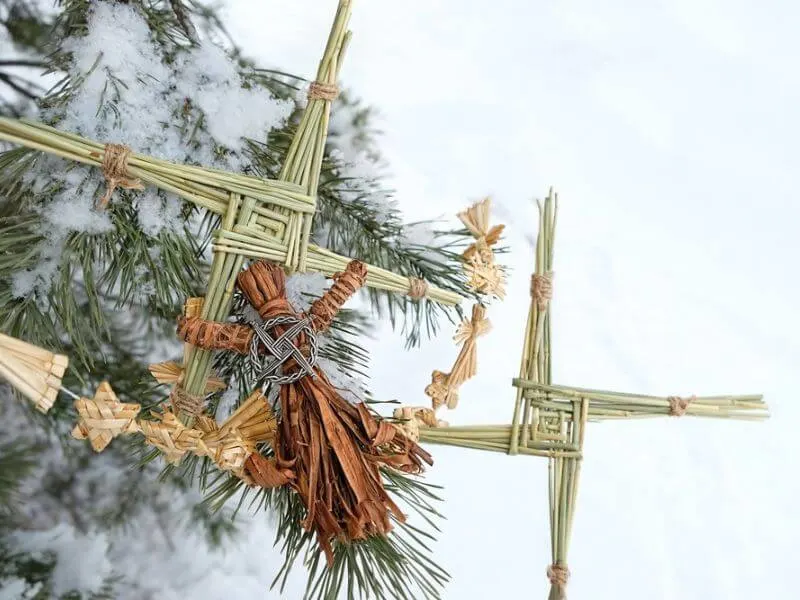
Traditionally on the eve of Imbolc, the festival to mark the beginning of spring, people would make doll-like figures.
These effigies of the Goddess Brigid were usually made from rushes and oats. Strips of material would have been used to cloth the dolls.
The Brídeóg, or (young Bríd) doll as it was known, would have been brought from one house to the next. This was the task of the young, unmarried girls and women.
Those who created and cared for the doll were believed to receive the fertility and prosperity blessings traditionally associated with Brigid, the Irish Fertility Goddess.
Brigid Irish Goddess as a Modern Goddess
The Brigid Goddess is still very much honored and respected in contemporary culture.
This is very common in Ireland, as well as with the Irish people and diaspora all over the world, especially in the United States.
Brigid’s legacy is wide ranging in influence.
It has gone far beyond the geographical boundaries of the small island of her origin. Furthermore people still find it relevant today.
Goddess Brigid and Imbolc: Rebirth and Growth
The start of spring triggers growth in flowers and plants and is a time to rejoice.
Brigid has long been associated with Imbolc, which is a festival of transformation.
We have seen how Brigid is deeply connected with nature, natural resources and fertility.
These act as reminders of the constant ability of rebirth, regeneration, and healing in our world.
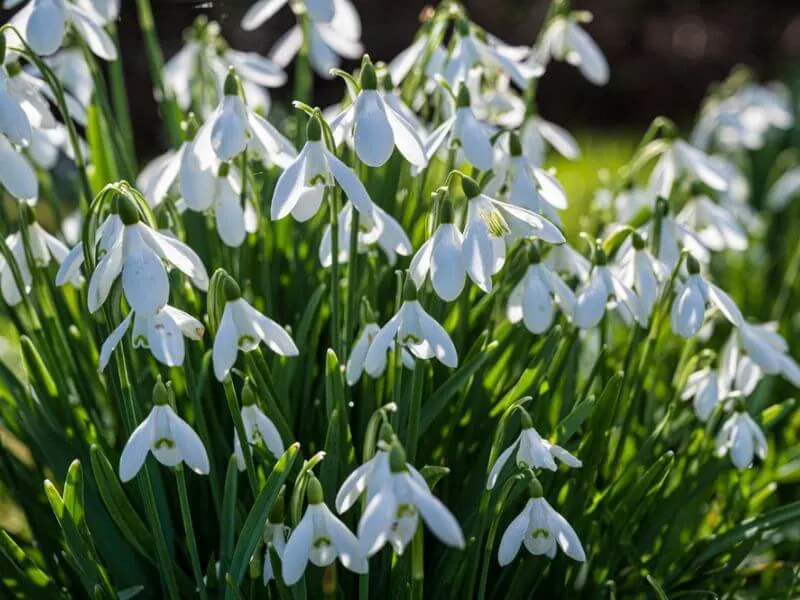
Many people like to remember Brigid at Imbolc.
Some Imbolc rituals include lighting fires or candles to honor her role as the Goddess of Fire.
Building a Goddess Brigid altar is another strong tradition.
Other people opt to make a Brigid’s Cross or a Brídeóg doll to mark the special occasion.
Note: Some people assume that Groundhog day is tied in some way to the celebration of Imbolc.
However, the two are not thought to be connected as Groundhog Day started in the late 19th century in the United States.
It is worth mentioning that around the start of spring, greater attention was paid to the movements of animals. The same was true of weather patterns.
They were thought to act as indicators for the upcoming weather and future harvest.
The Feast of Saint Brigid
Saint Brigid’s Day falls on February 1, the traditional celebration of Imbolc. This Christian feast day is an important day in the Irish calendar.
From 2023 a new national public holiday takes place on the first Monday in February to mark Saint Brigid and Imbolc.
While Saint Brigid has Christain roots, it is difficult at times to separate her from the Goddess Brigid.
There are strong parallels between the two major female figures.
It is possible that the Goddess Brigid was embraced into the Christian faith in the form of Saint Brigid.
The enduring impact of the Celtic Goddess can be seen in the continued connection of Saint Brigid with fire and light.
Furthermore, there is some speculation that the lozenges and diamond pattern found in some Brigid’s Crosses may have originally had Celtic influences.
(Note: This holy day is day is frequently referred to as the day of Saint Bridget in Irish culture, rather than Saint Brigid.)
The Goddess Movement and Revival
The Goddess Brigid is one of the goddesses that has received renewed interest in recent times.
As one of the divine female powers with wide ranging influence, she appeals to many people.
Her new found relevance in contemporary times is greatly linked to her aspects of healing, fire and motherhood.
People wish to learn more about the mythology of Brigid the Goddess and her relevance to everyday life.
They do this through taking part in focused workshops and retreats, as well as rituals.
The Goddess Brigid and Inspiration
Many artists have found that Brigid is a wonderful source of inspiration.
Perhaps it is her connection with birth, rebirth and growth that help trigger the artistic flow and capture the imagination.
There have been many stories of Brigid Celtic Goddess in literature, as well as symbols of her in art.
The Scottish artist, John Duncan is just one of the artists famous for his depictions of Brigid (or Bride Goddess).
Brigid the Goddess of Fire, Poetry and Healing – FAQs
Who is the Goddess Brigid?
Brigid is a powerful female deity that is a central figure in Celtic and Irish mythology.
The elements of fire and water are directly associated with this goddess. She is also known for her healing abilities and her nurturing mothering aspects.
Brigid is sometimes referred to as a triple Goddess.
How did the Goddess Brigid become a Christian saint?
Brigid origins can be traced back to Celtic mythology. She was respected for her many aspects that included fertility.
As Ireland slowlying transitioned from a pagan belief system to a Christian one, the Goddess Brigid also transformed into a Christian saint.
There is still a blend of Celtic and Christian beliefs connected with Brigid.
We can see from the joint celebration of the Goddess Brigid and St Brigid on Imbolc and the feast day of the saint on February 1.
What symbols are connected with the Goddess Brigid?
The Goddess Brigid is connected with fire, especially the eternal flame of Kildare. She is also deeply connected with water in the form of holy wells and waterways.
The Brigid’s Cross and the Brídeóg doll are symbols of this deity.
How is the Goddess Brigid celebrated today?
Imbolc, the ancient festival to mark the beginning of spring, is the main annual event where the Goddess Brigid is celebrated.
Renewed interest in this old fire festival has occurred in recent times.
The Goddess Brigid of Celtic Mythology
Brigid has had a lasting impact on Celtic and Irish mythology. As a triple Goddess her complex character is both sympathetic and appealing.
The various symbols that are associated with Brigid give us insights into the multifaceted aspects of this enigmatic deity.
There is still an air of mystery and intrigue to this Celtic deity. This is especially true in relation to her transition from Celtic Goddess to a revered Christian saint.
Brigid’s long and varied legacy is evidence of the old Celtic and Irish mythologies’ enduring influence in modern society.
Interested to learn more about another Irish Goddess? Then why not explore the shape-shifting Goddess Áine.
